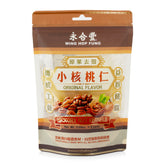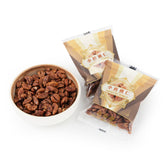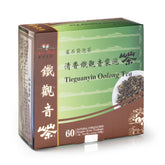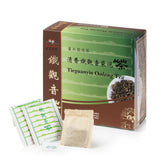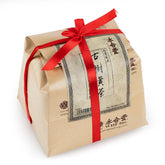Great Spring-Picked Green Teas

The “spring-picked” green tea harvest typically beginning in mid-March before April 4th, is sometimes called first flush, and is made up of the first leaf buds to sprout after the winter season. Thanks to relatively cold temperatures, these buds grow slowly fueled by glucose in the root system during the winter. There is an old Chinese tea saying, “Saving the best ... for first” because tea plants are dormant during winter and the aromas that are increased inside come bursting forth in early spring!
Why is Spring-Picked First Flush Tea valuable?
After the cold, tedious winter months, we can't wait to sip fresh spring tea the long-awaited messenger of a new year and a new beginning for all things. The tea nutrients are rushed to the newly sprouting buds and tender leaves to stimulate the plant's growth. Abundant rainfall and rising temperature make the spring tea fresh, tender, and flavorful. So much so that early spring tea can be ten times more expensive than the one picked later in the year. Spring Teas are Early, Scarce and extremely High Quality.
-
Early The first flush of spring tea is the very first yield for the year, before the beginning of the actual season. During that time, the plants' growth is still slow, and the yield is low. Therefore, it is priced accordingly.
-
Scarce Even in large tea gardens, the amount of the first spring tea is very limited, not to mention the caprices of weather and climate.
- High quality In China, the first spring tea has an almost magical reputation. It is considered a drink that concentrates spring's essence and vital energy for a one-of-a-kind tea experience. From a modern perspective, early spring is when the plant awakens after a long period of stagnation. The plant metabolism activates the accumulated nutrients and rushes them to the buds, resuming the growth cycle. In addition, fertilization and pest control have not yet resumed during this early period, making the first spring tea cleaner and healthier.
The Powers of Early Spring Teas
Many cultures honor spring as the time of rebirth. Every living thing that was frozen and stagnant under the winter frost wakes up and comes to life. The Chinese believe that Qi, the vital force present in all things, surrounds and moves us. Early spring is the time when this vital force is in full swing, active and vigorous. It makes the plants' stagnant juices flow, sending a powerful load of earth nutrients to the germinating buds giving the plant its strong energizing and healing properties. Spring-picked tea has the essence of spring's resurrecting powers in a cup. The strong growth energy of the tea leaf and the absence of pests in early spring tea eliminate the need for pesticides and fertilizers. Therefore, Spring-picked fresh green tea is considered very pure, healthier than teas during the rest of the year.
Health Benefits of Spring-Picked Green Teas:
In General Green Tea health benefits include:
- High in polyphenols which protect the body against disease.
- Natural stimulants, including caffeine, may enhance brain function.
- Boosted metabolism.
- Beneficial effect on blood sugar control.
- Reduced risk of heart disease.
High in protective Polyphenols
Compounds called polyphenols are known to protect the body against disease and make an important contribution towards a healthy, balanced diet. Green tea has numerous health benefits many of which are attributed to the fact that it is largely unprocessed and rich in these plant compounds. The main bioactive compounds in green tea are flavonoids, with the most potent being catechins and epigallocatechin gallate (EGCG).
Boosts brain function
Green tea contains a number of natural stimulants, including caffeine, which although not as high as coffee, may still help maintain alertness and focus. In addition to this, green tea is a source of the amino acid L-theanine, which has a relaxing effect by increasing mood-enhancing brain chemicals including GABA, dopamine and serotonin. The beneficial polyphenols of green tea may also help slow the effects of aging on the brain.
Boosts fat burning
Some research suggests that green tea may boost metabolic rate and increase fat burning. This is thought to be thanks to the natural thermogenic properties provided by caffeine, and by the plant compounds such as catechins.
Supports blood sugar control
Green tea may improve insulin sensitivity and as a result have a beneficial effect on blood sugar control.
Protects Heart Health
By aiding digestion, blood sugar, reducing cholesterol and stress, green teas protect heart wellness and longevity.
West Lake Longjing Tea
West Lake Longjing Tea" has a wide range of production areas and deep jurisdictions. It not only includes the five core primary production areas within the West Lake Scenic Area: Lion, Dragon, Cloud, Tiger and Plum, but also includes the secondary production areas such as Longwu, Liyuan, Zhuantang and Zhoupu.
● West Lake Longjing tea in the "lion" production area:
It is produced in and around Shifeng Mountain in Hangzhou. Including: Longjing tea from Shifeng Mountain, Longjing Village, Qipan Mountain, Shangtianzhu, and other places.
Quality characteristics of West Lake Longjing tea in the "lion" production area:
The color of the soup is green and yellow, tender yellow-green, commonly known as "brown beige"; the taste is fresh and mellow; the chestnut fragrance is obvious and the aroma is sharp and long-lasting; when making tea, it does not pay attention to its appearance, which becomes its prominent feature; the character "lion" is the best quality "best" in West Lake Longjing tea.
● West Lake Longjing tea in the Dragon "Long" production area:
It is produced in and around Longjing Mountain, Hangzhou. Including: Longjing tea from Wengjia Mountain, Yangmeiling, Manjue Mountain, Baihe Peak and other places. The area is close to the "lion" area, and the quality of the West Lake Longjing tea produced is also good. In particular, the West Lake Longjing tea produced by Baihefeng is comparable to that of Shifeng Mountain, and is also deeply loved by consumers.
Quality characteristics of West Lake Longjing tea in the "Dragon" production area:
The quality characteristics are the same as the "lion" West Lake Longjing tea.
● West Lake Longjing tea in the "Plum" production area:
It is produced in Meijiawu and surrounding areas in Hangzhou. It is the main producer of West Lake Longjing tea, and the output accounts for about one-third of all West Lake Longjing tea.
Quality characteristics of West Lake Longjing tea in the "Plum" production area:
The appearance is beautiful, flat and smooth, and the color is green and green; the taste is fresh and smooth; the soup is green; the bean fragrance is fresh, slightly inferior to the lion character; the workmanship is delicate and exquisite; it has become the main production area of West Lake Longjing tea.
● West Lake Longjing tea in the "cloud" production area:
It is produced in Yunqi, Wuyunshan, Yingling, and the surrounding areas of Hangzhou. The style of Yunzihao West Lake Longjing Tea and Meizihao West Lake Longjing Tea is basically the same, because they were originally a family, but they were "sepated" later.
Quality characteristics of West Lake Longjing tea in the "cloud" production area:
The appearance is beautiful, flat and smooth, and the color is emerald green; the taste is fresh and mellow; the soup is green; the workmanship is delicate and exquisite; it is also the most representative West Lake Longjing tea.
● West Lake Longjing Tea in the "Tiger" production area:
Longjing tea is produced in Hangzhou Hubo, Siyanjing, Chishanbu, Santai Mountain and other places. Later, the West Lake Longjing tea produced in Zhongtianzhu, Baileqiao, Maojiabu, Huanglongdong and other places was also classified as a tiger.
Quality characteristics of West Lake Longjing tea in the "Tiger" production area:
The buds and leaves are fat and strong, and the blades of the buds are exposed.

